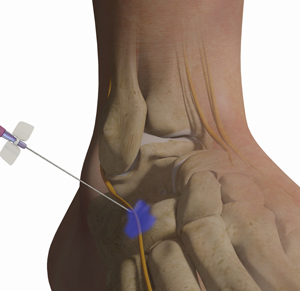
What is Neurolysis?
Neurolysis is a procedure that involves injecting chemical agents into nerve fibers to reduce nerve pain by destroying the damaged nerves. These agents degenerate the nerve fibers blocking the transmission of pain signals. Neurolysis may also involve surgery to remove scar tissue around or within the nerve tissue or to remove the nerve itself.
Indications of Neurolysis
In the foot, chemical neurolysis is mainly used to treat severe or chronic pain from a neuroma. This is a condition in which nerve tissue in the foot becomes inflamed and enlarged causing pain. A foot neuroma can occur due to ill-fitting shoes, abnormal bone structure, or trauma causing irritation or damage to the nerves. Neurolysis is recommended when the pain is persistent and not relieved by other treatments such as orthotics, corrective shoes, or cortisone injections.
Procedure for Neurolysis
To perform neurolysis, your doctor will inject the affected area once a week with an alcohol-anesthetic solution for a period of one or two months gradually destroying the nerve tissue and relieving symptoms.
The treatment is successful in most cases but should your symptoms persist, your doctor may recommend surgical neurolysis, which involves either relieving pressure on the nerve or removal of the nerve.
Benefits of Chemical Neurolysis
- High success rate
- Fewer complications (Following surgical neurolysis, there is a risk you may develop a stump neuroma which is usually more painful)
- Faster recovery as compared to surgery
- Cost-effective

